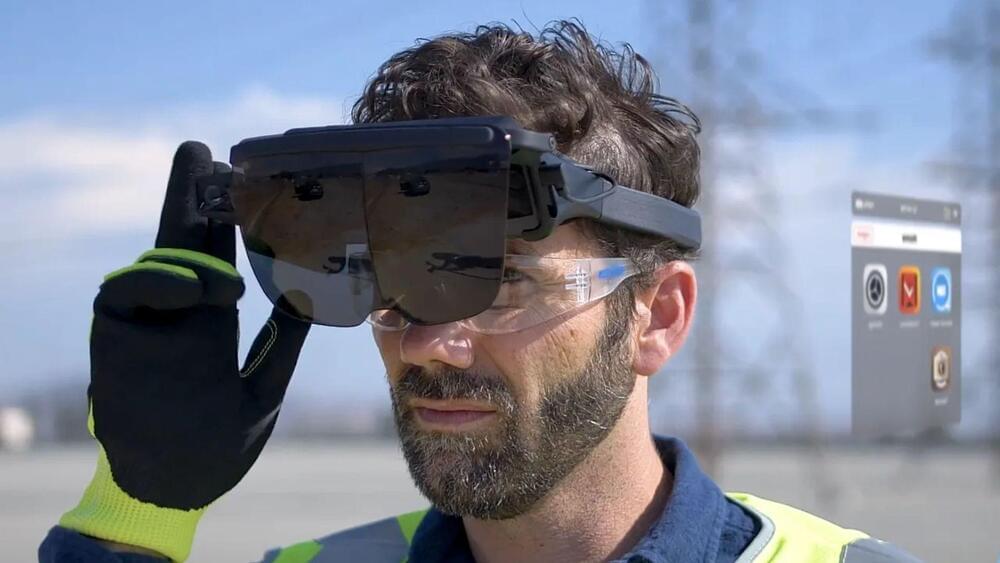Ray Kurzweil is known for making predictions in technology that have come true — and now he is sure humans will reach immortality in our lifetime. He also explains how robots will make it happen.
Get the latest international news and world events from around the world.

Interstellar Cyclers
A new kind of starship.
The huge distances between Earth and the nearest star make it necessary for us to conceive of extremely high-velocity starships if interstellar travel is to be possible with durations less than a human lifetime. In practise this means accelerating the starship to some percent of lightspeed. The problem with doing this, of course, is that truly phenomenal amounts of power are required to boost a ship to such velocities.[1]
Various propulsion schemes have been proposed, from nuclear fusion to antimatter to laser sails. Until recently, laser sailing seemed like the most economical and easiest way, even though it still requires that we build lasers that draw more power than all of human civilization is now capable of producing. [Author’s note: since I first wrote this a method has been proposed that could amplify a laser launcher’s power by factors of tens of thousands. So I guess laser launch is back on the table.].

NASA awoke Voyager 1 from 14.6 billion miles away, and the spacecraft responded
Launched in 1977, NASA’s Voyager probes continue their exploration, pushing the boundaries of human understanding. Earlier this year, NASA faced an unsettling situation when Voyager 1, second of the pair to be launched, began sending back distorted communications. This sparked worries about a significant system failure in the spacecraft, now 45 years into its journey. However, NASA recently reported that it had successfully rectified the problem, which in turn has uncovered another mystery to investigate.
Voyager 1’s journey began with a “Grand Tour” of the outer planets — Jupiter, Saturn, Uranus, and Neptune — enabled by a unique planetary alignment. After its journey past Jupiter and Saturn, Voyager 1 outran its twin, Voyager 2, eventually becoming the first man-made object to leave the solar system in 2012.
The trouble began when NASA detected issues with the craft’s attitude articulation and control system (AACS), responsible for ensuring the probe’s antenna stays pointed towards Earth. Failure of this system could result in a permanent loss of communication with the aging explorer. While this system returned scrambled updates, the probe was still transmitting valuable data, signaling that something was amiss.
Gemini North back on sky with dazzling image of supernova in the Pinwheel Galaxy
The Gemini North telescope, one half of the International Gemini Observatory operated by NSF’s NOIRLab, has returned from a seven-month hiatus literally with a bang, as it has captured the spectacular aftermath of a supernova, a massive star that exploded in the large, face-on, spiral Pinwheel Galaxy (Messier 101). The supernova, named SN 2023ixf (lower left), was discovered on May 19 by amateur astronomer Koichi Itagaki.
Since its discovery, observers around the globe have pointed their telescopes toward Messier 101 to get a look at the burst of light. Over the coming months, Gemini North will allow astronomers to study how the light from the supernova fades and how its spectrum evolves over time, helping astronomers better understand the physics of such explosions.
The appearance of SN 2023ixf is rather serendipitous for the Gemini North telescope, which is back to observing with its primary mirror repaired and recoated after suffering damage in late 2022. The damage was limited to a small region outside of the light-collecting area of the mirror. Nevertheless, the repairs were carefully planned and completed to ensure that Gemini North could safely return to normal operations. This process lasted approximately seven months and in May 2023 the mirror was recoated and reinstalled, and the control systems were powered up and tested.

June 5, 1995: First Bose Einstein Condensate
The BEC phenomenon was first predicted by Satyendra Bose and Albert Einstein: when a given number of identical Bose particles approach each other sufficiently closely, and move sufficiently slowly, they will collectively convert to the lowest energy state: a BEC. This occurs when atoms are chilled to very low temperatures. The wavelike nature of atoms allows them to spread out and even overlap. If the density is high enough, and the temperature low enough (mere billionths of degrees above absolute zero), the atoms will behave like the photons in a laser: they will be in a coherent state and constitute a single “super atom.”
JILA’s Carl Wieman (University of Colorado, Boulder) and Eric Cornell (NIST) first started searching for a BEC around 1990 with a combination laser and magnetic cooling apparatus. Wieman pioneered the use of $200 diode lasers (the same type used in CD players) instead of the $150,000 lasers other groups were using. His approach was initially met with skepticism by his colleagues, but when he began to report real progress, several other groups joined the race to achieve the first BEC. Beginning with rubidium gas atoms at room temperature, the JILA team first slowed the rubidium and captured it in a trap created by laser light. This cooled the atoms to about 10 millionths of a degree above absolute zero—still far too hot to produce a BEC.
Once trapped, the lasers are turned off and the atoms are held in place by a magnetic field. The atoms are further cooled in the magnetic trap by selecting the hottest atoms and kicking them out of the trap. Then came the tricky part: trapping a sufficiently high density of atoms at temperatures that were cold enough to produce a BEC. To do this, Wieman and his colleagues had to devise a time-averaged orbiting potential trap (an improvement to the standard magnetic trap).

Physicists discover an exotic material made of bosons
Take a lattice—a flat section of a grid of uniform cells, like a window screen or a honeycomb—and lay another, similar lattice above it. But instead of trying to line up the edges or the cells of both lattices, give the top grid a twist so that you can see portions of the lower one through it. This new, third pattern is a moiré, and it’s between this type of overlapping arrangement of lattices of tungsten diselenide and tungsten disulfide where UC Santa Barbara physicists found some interesting material behaviors.
“We discovered a new state of matter—a bosonic correlated insulator,” said Richen Xiong, a graduate student researcher in the group of UCSB condensed matter physicist Chenhao Jin, and the lead author of a paper that appears in the journal Science.
According to Xiong, Jin and collaborators from UCSB, Arizona State University and the National Institute for Materials Science in Japan, this is the first time such a material—a highly ordered crystal of bosonic particles called excitons—has been created in a “real” (as opposed to synthetic) matter system.

DeepMind AI’s new way to sort objects could speed up global computing
Sorting algorithms are basic functions used constantly by computers around the world, so an improved one created by an artificial intelligence could make millions of programs run faster.

Instagram is working on an AI chatbot, leaked images reveal
With its very own chatbot, Instagram will join the likes of Snapchat and Quora.
Instagram is allegedly working on bringing an artificial intelligence chatbot to direct messages (DMs) for a more fun and engaging experience, according to the mobile developer and reverse engineer Alessandro Paluzzi.
According to the screenshot attached in Paluzzi’s tweet, one can make out that the chatbot can also help users write messages when conversing with someone. Another… More.
Stockcam/iStock.
In his tweet, Paluzzi said that the AI chatbot would be able to answer users’ questions and give advice. The user will also be able to choose from 30 different personalities. He said that the chatbot will be something like OpenAI’s ChatGPT.

Apple acquires Mira, a lightweight AR headset startup with military contracts
The U.S. Navy has awarded Mira a $700,000 contract, while another agreement is set in stone with the U.S. Air Force.
Right on the heels of unveiling its Vision Pro mixed reality headset, Apple has now confirmed that it has acquired Mira, a Los Angeles-based maker of light hardware for augmented reality, The Verge.
The Worldwide Developers Conference had unveiled Apple’s plans for its future as it revealed a string of devices powered by ‘homegrown’ chips and the much-awaited foray into the mixed reality space.

How soccer players and athletes are using AI to fight online hate
Racial discrimination and slurs against sports persons are rampant on social media.
If there’s one Olympic moment etched into our memories, it is the 1968 Black Power Salute which saw African American sprinters Tommie Smith and John Carlos standing on the podium raising their gloved hands in solidarity with oppressed Black people worldwide.
What followed was their ostracization from the U.S. sports institutions, racial abuse, and worldwide condemnation and vilification back home.